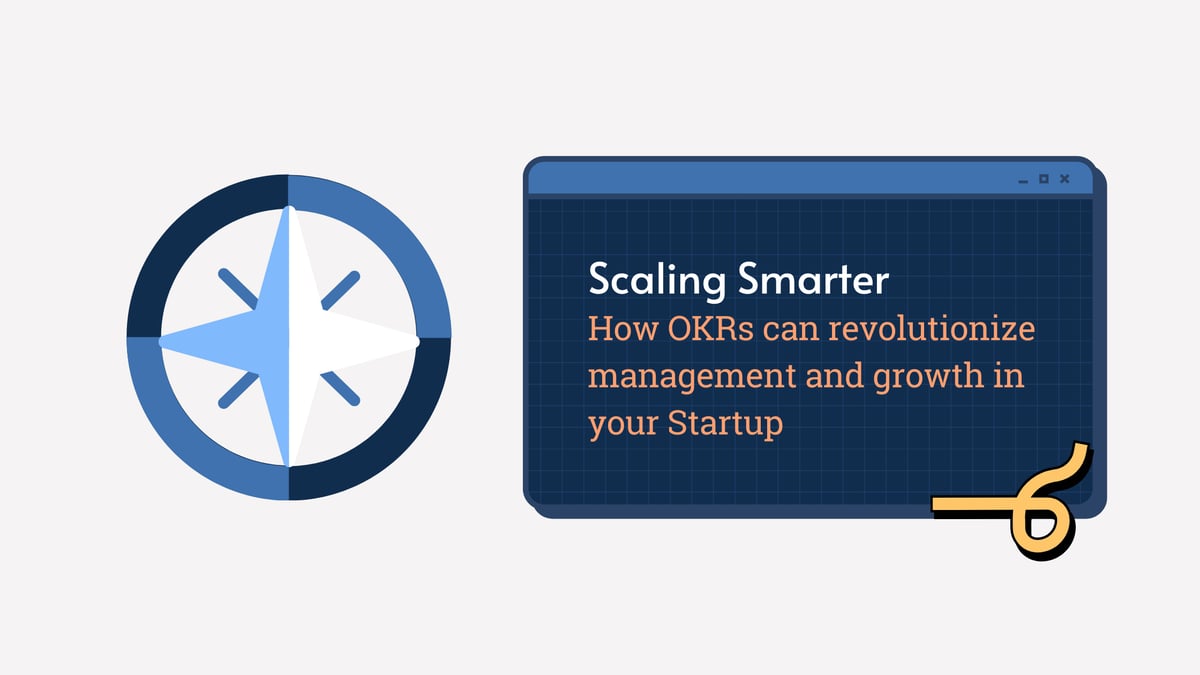
Are you the founder of a startup who is looking for a way to stay focused, aligned, and scale efficiently? What if I was to say that OKRs (Objectives and Key Results) are a path to success that can transform how your team executes and accelerates growth?
After all, OKRs are a game-changing approach to structuring your startup’s goals, guiding your efforts, and measuring progress, not just a management tool with a fancy name to flaunt around. But how can this powerful method work for you? Let’s break down how OKRs can supercharge your startup’s growth and execution.
Startups face a lot of challenges in the beginning. Issues like limited resources, market unpredictability, and the need for rapid growth often create a chaotic environment. In these circumstances, what matters most is focus and alignment. OKRs play a critical role here by offering a simple yet powerful structure that turns vague aspirations into concrete goals. They provide a clear direction for the entire team, ensuring that every initiative and decision is connected to a shared mission.
OKRs give clarity and alignment by turning strategy into action. They help reduce noise, avoid wasted effort, and ensure that even when resources are tight, teams are working on what really matters. Instead of chasing opportunities randomly, your team can concentrate on the few key outcomes that will move the needle.
At Eskolare, we started with a very simple OKR system. Even in our earliest days, with few people and tight budgets, having clarity on our main objectives helped us avoid distractions and stay disciplined. Over time, we refined our approach, introducing better metrics, more rigorous reviews, and deeper alignment across the team. This helped OKRs evolve from a useful tactic into a true growth engine. They gave us a framework to define what success looked like each quarter, track progress, and course-correct quickly when needed.
Imagine that your entire team is aligned around the same objectives at the same time. Not just on paper, but in daily execution, priorities, and decision-making. OKRs allow you to connect every individual effort—no matter how small—to the broader company mission, turning abstract vision into practical direction. This connection creates a powerful sense of purpose, where team members understand how their work directly contributes to the company's progress.
Whether you’re a founder or a team member, having clear goals means fewer distractions, less duplicated work, better coordination, and ultimately, more impactful results. When priorities are well-defined and shared, teams gain agility and confidence to act. At Gringo, we continued refining our OKR system year after year. This consistency created a rhythm of continuous improvement, where each cycle helped us learn, adapt, and raise the bar. It allowed us to evolve our goals in tandem with our growth, improving not only our execution but also deepening our alignment and sharpening our long-term vision.
Implementing OKRs at your company is easier than it sounds like. The first step is to define your True North, the long-term vision of your startup. At Eskolare, we anchored our OKRs to a clear mission: solving a pressing pain point in the market. From there, define your company-level objectives that are inspirational, time-bound, and ambitious. For example, "Become the market leader in remote collaboration by the end of 2024."
Next, set specific, measurable, and challenging key results for yourself. For Gringo, this might have meant increasing user growth, improved retention, or integrating with new platforms. Cascade these OKRs to every team member, so everyone knows how their efforts contribute to the company’s goals.
OKRs are a very powerful tool, but they need to be used properly and correctly. One common mistake I’ve seen over the several years is setting too many OKRs. Setting too many OKRs leads to a lack of focus and unnecessary complexity. Set your aim towards a few but high-impacting objectives and make sure that they are challenging enough to push your team forward to do better.
Do not treat OKRs like simple task lists. Focus on results and measurable impact. Remember, OKRs should be about aligning your team, not tying them to bonuses or salaries, which can lead to unambitious goals.
As your startup grows over time, so should your OKRs. They are not static—your objectives and key results must evolve alongside your business model, customer base, and internal capabilities. In the earliest stages, your OKRs should zero in on discovering and validating product-market fit. This might include understanding customer pain points, refining your value proposition, or measuring user engagement to ensure you’re solving a real problem. Clarity and speed are critical at this phase, and OKRs help narrow your focus on what truly matters.
As you reach the growth stage, your focus shifts. OKRs should now aim at scaling operations, building repeatable processes, and acquiring new customers efficiently. Objectives might include expanding into new markets, improving conversion rates, or hiring key team members. With each new phase, the complexity of your operation increases, and OKRs become a strategic filter to prioritize what's essential and avoid distractions.
Later on, when your startup has found traction, OKRs should support efforts to diversify revenue streams, increase customer lifetime value, and build operational efficiency and profitability. At Gringo, we followed this path step-by-step. We initially focused our OKRs on acquiring customers and proving demand. Once we had traction, we pivoted our focus to user retention—making sure we were delivering long-term value. Eventually, our OKRs helped us drive the expansion of new revenue lines, pushing the business to its next stage of growth. The adaptability of OKRs allowed us to keep momentum while staying aligned at each turning point.
OKRs are not simply a framework, they are a tool that can completely change your startup for the better. In my experience. I have learned that the true strength of OKRs lies in the simplicity and adaptability they show. Start small, learn from each quarterly cycle, and adjust your objectives as your business grows. By staying focused on what really matters, OKRs can provide the clarity and alignment needed to drive meaningful growth.
Are you ready to implement OKRs in your startup? Let’s make your growth journey more focused, aligned, and efficient.
If you’re ready to learn more about how OKRs can completely transform your startup’s growth, or need guidance on implementing them in your own business, I am here to help. Let’s work together to ensure your startup hits its next big milestone with OKRs.
Find out if MentorCruise is a good fit for you – fast, free, and no pressure.
Tell us about your goals
See how mentorship compares to other options
Preview your first month
